Last year, The WON ran a review of the Ruger-57. I purchased the gun because I liked it so much, so consequently, it has been brought out to show off to friends and family on the range. This year, Ruger released a threaded barrel kit for the 57, and of course, since I happen to have a silencer that will fit, I ordered the kit. I can hardly wait to see what my kids think about this one.
Sponsored by Ruger
I especially liked the part where Ruger claimed no gunsmithing is required to replace the old barrel with the new one. The kit comes with instructions and everything you’ll need to replace the original factory barrel with one adaptable to a suppressor. Caution – even though it may fit on the adapter, and allow a .22 caliber bullet to pass through, do not use a suppressor that is not specifically rated by its manufacturer for the 5.7 x 28mm cartridge, as the 5.7 ammo has a much higher operating pressure and greater gas volume than a .22 rimfire cartridge.
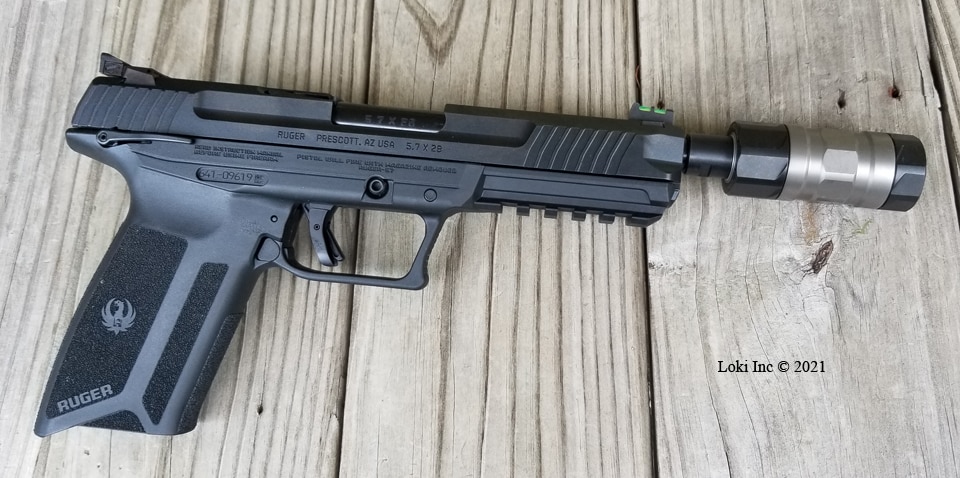
If you’re more inclined to learn from a video, you may watch this one at the Ruger website. I recommend watching the video as well as reading the instructions. Each include a lot of important information, but delivered differently. The kit comes with a thread protector, suppressor thread adapter (it has M10 threads on one end to match those on the barrel and a ½” x 28 TPI threaded portion [Class 2A] on the other end for a suppressor) and wrench. The wrench is for tightening and loosening the protector and adapter, and you must use it. It’s unlikely you’ll have another wrench that will work, and the wrench design and length is purposely set to keep you from overtightening the muzzle devices.
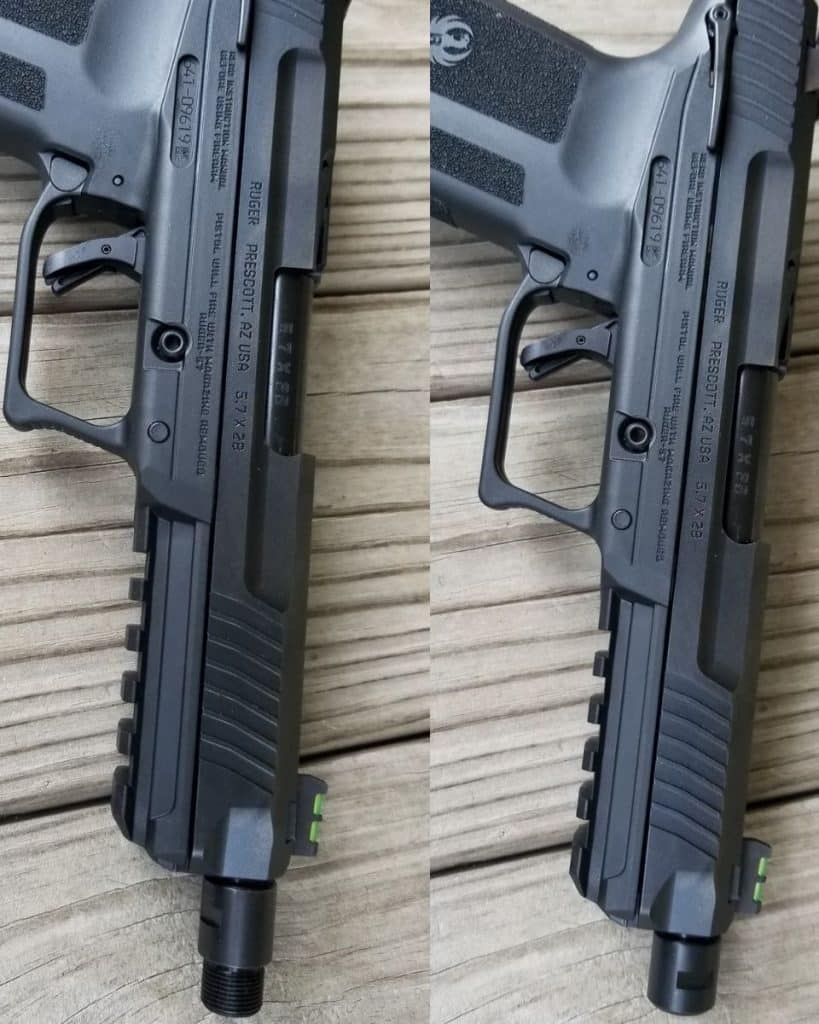
Be sure to follow the written instructions that come with the kit when replacing the original barrel with the threaded barrel. The process is not much different than disassembling the gun for cleaning. After removing all ammo from your cleaning area, removing the magazine from the gun, and verifying there is no cartridge in the gun’s chamber, follow the instructions to strip the gun as if you are going to clean it. Note – If the muzzle protector device is on the threaded barrel, you must remove it in order to insert the barrel into the slide. Then, follow the instructions to reassemble the pistol.
As an aside, remember that when you get ready to disassemble the pistol for cleaning, you’ll have to remove whatever muzzle device (suppressor adapter or thread protector) is on the barrel in order to remove the barrel from the slide.
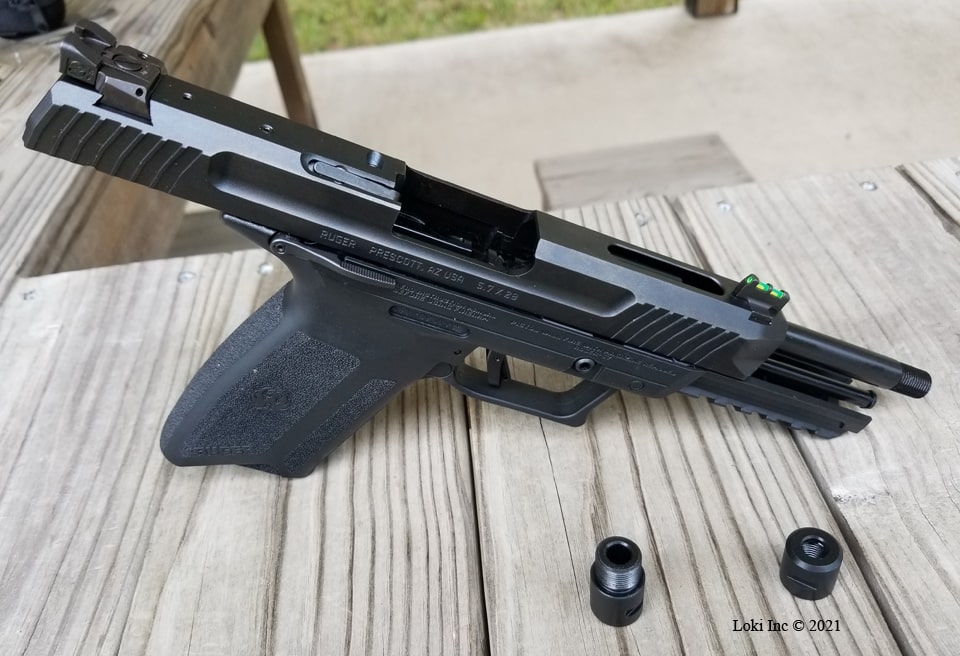
Finding a Suppressor
As the video stresses, make sure that the suppressor you use is compatible for the pressure from a 5.7 x 28mm cartridge. Also, do not use a suppressor with a booster or Neilson Device that is intended for tilting-barrel pistol actions, as the Ruger-57 uses a delayed blowback action and doesn’t need the booster. Using a Neilson Device on the Ruger-57 will likely damage the pistol. According to Ruger, direct-thread (no booster) centerfire pistol suppressors work best with the Ruger-57 threaded barrel.
Tips for Smooth Operation
Ruger also recommends thoroughly cleaning the gun’s chamber with a .30 or .270 caliber bore brush and solvent every few magazines when shooting the Ruger-57 with a suppressor. If you pay attention to the ejected cartridge cases, and compare ones fired unsuppressed to ones fired with a suppressor, the suppressed ones have a black coating of soot that you won’t find on the unsuppressed ones. That sooty build-up is on the inside of the chamber, too, and can interfere with case chambering, seating, and extraction.
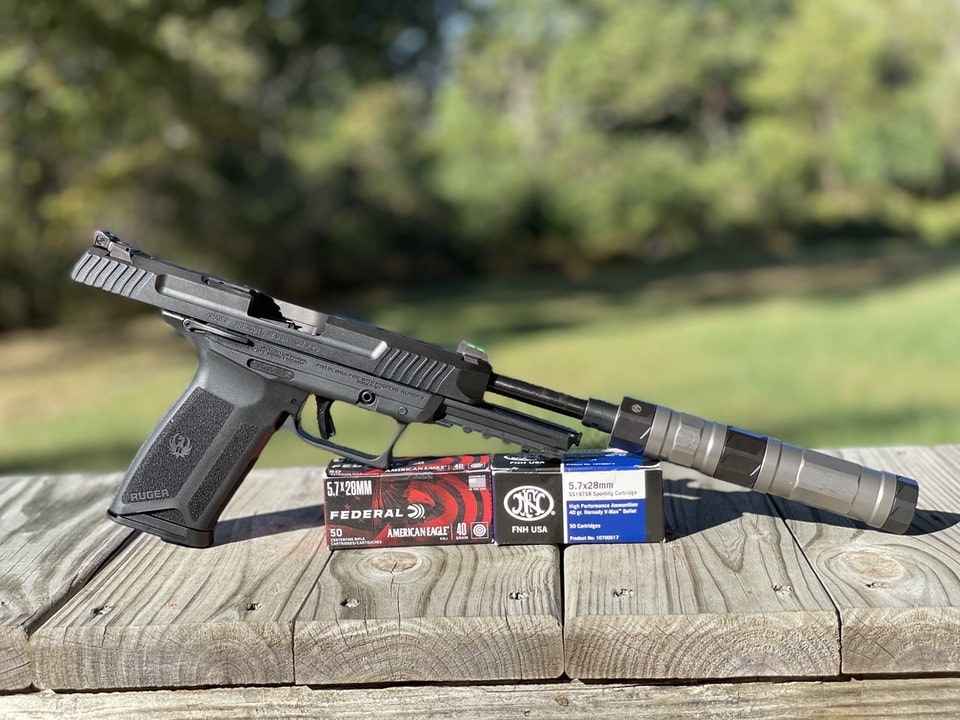
Be sure to keep the suppressor and the threaded barrel adapter tight during your range session, since a loose suppressor might experience a baffle strike during firing.
Ruger also recommends using 40-grain 5.7 x 28mm ammunition when using a suppressor, particularly if you have an optic mounted on the slide; otherwise, you may have occasional ammo feeding failures with the gun.
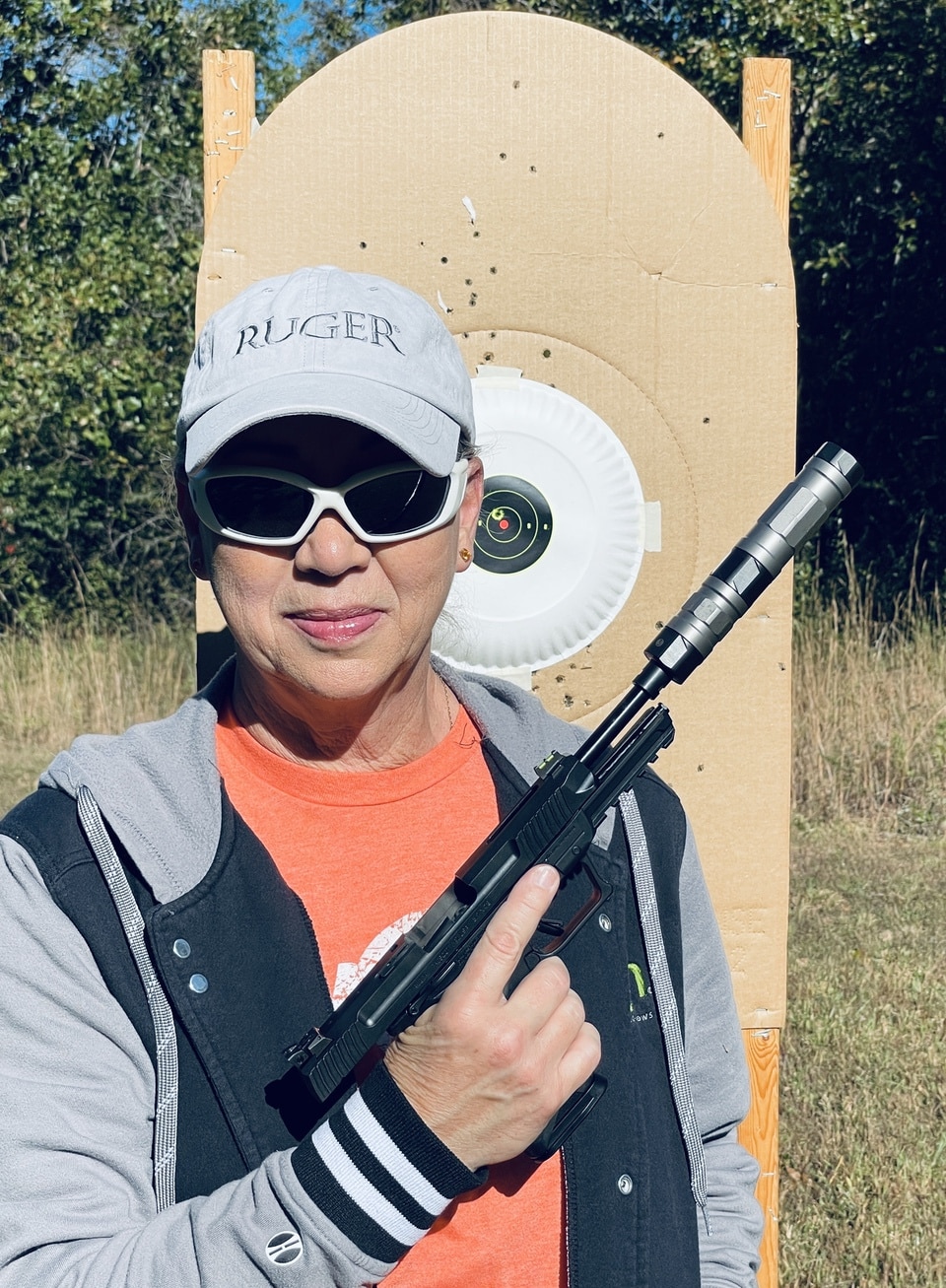
On the range
The SilencerCo Switchback 22 is a .22 rimfire suppressor rated for 5.7 x 28mm ammunition, and is modular – the user can set it up in short, medium, and long configurations, depending on the desired noise reduction (the reduction increases with suppressor length).
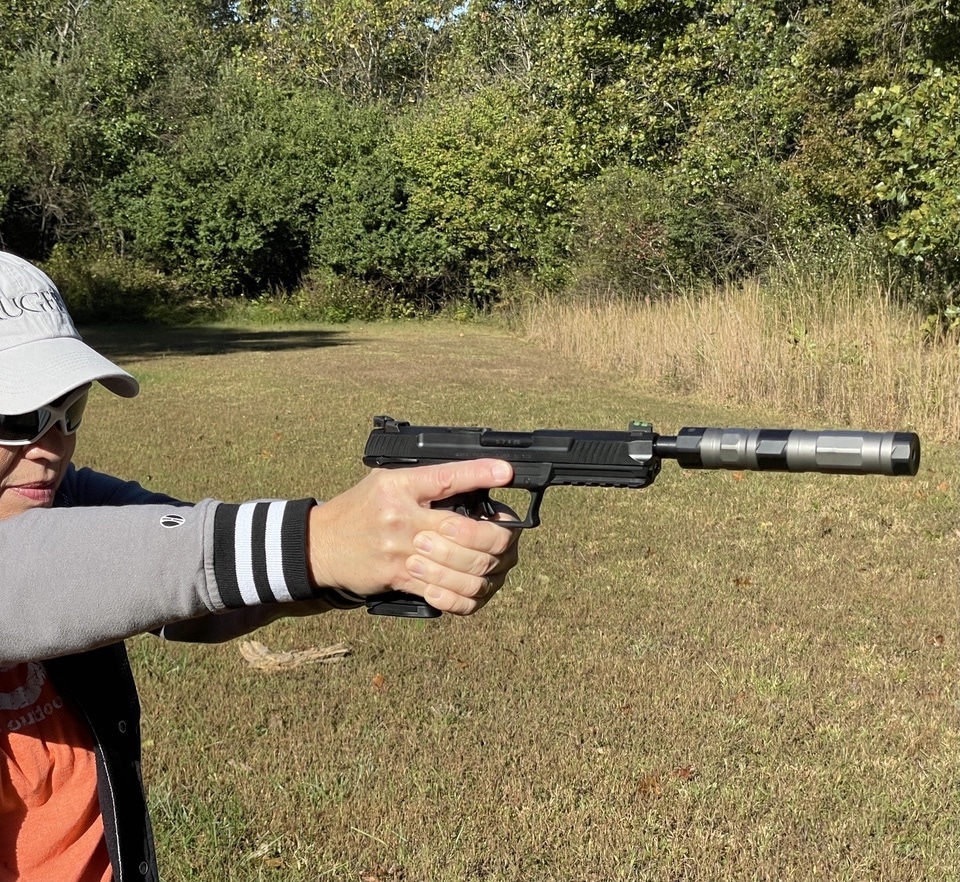
As a test, I tried the short configuration first, followed by the medium and long configurations. I was wearing hearing protection for the test, but I could tell that each configuration was quieter than the last (and all were quieter than the unsuppressed pistol, which is quite loud). I haven’t yet tried my SilencerCo Omega 300 suppressor, but at 12.6 ounces it is nearly double the weight of the Switchback. With the larger hole in its front to allow for bullets up to .30 caliber (7.62mm), the Omega may not be any quieter with the 5.7 ammo than the Switchback. The Omega’s apparent larger internal volume (it is longer and has a greater diameter) may make a difference, though.
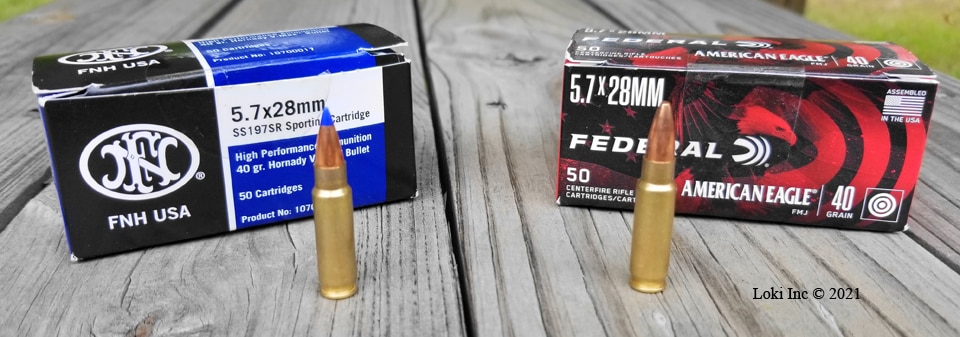
Nevertheless, even though it requires more suppressor size and volume than .22 caliber rimfires to bring the muzzle report to hearing safe levels, because of its 5.7 x 28mm ammo, the Ruger-57 is still a high-performance, fun gun to shoot; with a suppressor, it’s no longer a “blast!”
MSRP for the Ruger-57 Threaded Barrel Kit: $299.95
Purchase the threaded barrel kit.
Publisher/Editor Barbara Baird is a freelance writer in hunting, shooting and outdoor markets. Her bylines are found at several top hunting and shooting publications. She also is a travel writer, and you can follow her at https://www.ozarkian.com. View all posts by Barbara Baird
I continue to have a problem finding 5.7 x 28 ammunition. Apparently it is still wildcatish. Can you give me an idea of where to find it and when it will begin to be manufactured again?